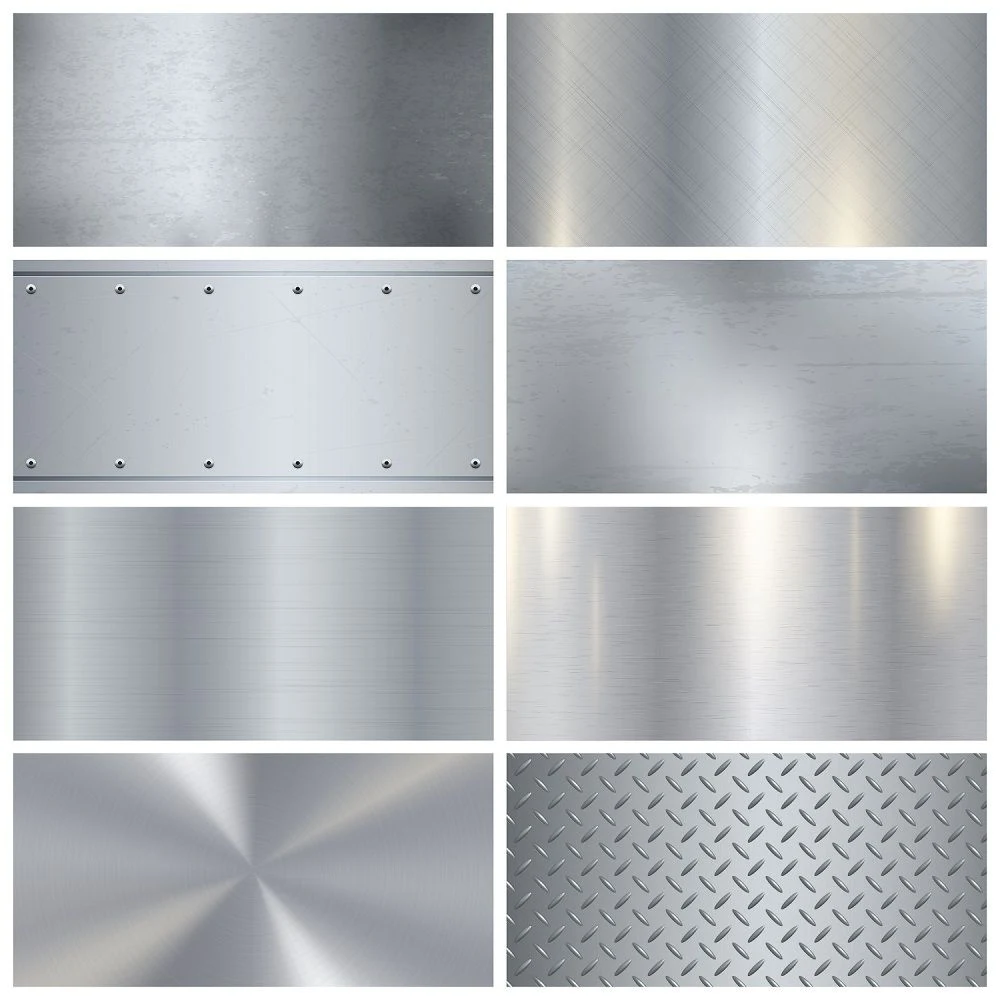Stainless steel is a combined array of metals and other elements that make it tough, versatile, and even lightweight. Here, we will discuss stainless steel plates, their types, properties and applications.
 |
| Different types of Stainless Steel Sheets |
All About Stainless Steel Sheet: Types, Properties, and Applications
You might be familiar with the term stainless steel, but to understand its properties and usage in detail you should know some unique and important things about this metal.
Stainless steel is a term that is used for a group of iron-based alloys which contain nearly 10.5% chromium. Chromium is a significant additive that resists corrosion. The chromium forms a passive layer that is ultra-thin in nature and plays a vital role in preventing rust.
Additionally, if you look for stainless steel sheets for sale, you will read about alloy with 1.2% of carbon and other materials like nickel, silicon, manganese, nitrogen, and niobium. This concludes that stainless steel is a combined array of metals and other elements that provides various properties, comes in different types, avail numerous benefits, and designs applications.
Types of stainless steel sheets
You get a wide variety of stainless steel sheets to choose from, but the most preferred ones among the consumers are as follows:-
Austenitic stainless steel
This steel contains austenite as a primary microstructure which is a solid solution of iron and carbon. This solution comes above the critical temperature of 723 degrees celsius. This family of stainless steel is tough, impressive, and resistant to elevated temperature. This steel is built with three different metals which include 70% austenitic, 16% chromium, and 6% nickel. This stainless steel grade is a non-magnetic metal and the heat treatment won’t harden it easily.
Ferritic stainless steel
Ferritic steel only has chromium as an alloying element. The quantity of chromium content ranges between 10.5 to 18%. This steel has various metallic properties like corrosion resistance, magnetic, and heat treatment does not harden the metal. Overall they resist stress corrosion.
Martensitic stainless steel
The signature ingredients of this steel are higher carbon and lower chromium. It is magnetic, does not display poor weldability, and has higher hardenability. The properties of this metal can be improved with heat treatment. The corrosion resistance might be lower compared to the other two metals.
Properties of Stainless Steel Sheet Metal
Stainless steel has attractive properties that make it versatile for multiple purposes. Check them out from below
Shiny and tough
Stainless steel could be partially corrosion and stain-proof. It entirely depends upon its content and chemicals. However, the content of the steel offers durability and resistance against stains and corrosion which makes the aesthetics appealing.
Thickness up to 1/4th inch
The metal has 1/4th of thickness which is referred to as a metal plate. This thickness is measured with a gauge. The higher the unit of gauge, the thinner the sheet. The sheet metal size charts help you know the perfect measurement of your material.
Variety of choices
Stainless steel sheets come with different configurations, sizes, grades, finishes, and types which are as follows:-
200 series Austenitic
This series of metals include chromium, carbon, nickel, and manganese. It hardens the series but can only be partially resistant to corrosion.
300 series Austenitic
Thi series occupies 70% stainless steel which is ductile, weldable, and corrosion-resistant. The popular subtype of this series is Grade-304 also know as A2 stainless. It contains 18% chromium and 8% nickel.
400 series in ferritic steel
This series includes Ferritic and materialistic alloys. These grades provide features like heat treating, strength and wear resistance, and corrosion resistance. This series is used in agricultural equipment, motor shafts, and gas turbine parts.
How Easy Is It to Manipulate Stainless Steel?
Working with stainless steel is easy and convenient compared to other metals using the following methods.
Welding
Applying too much heat to the metal could cause a risk of burning. The MIG welding lets you control it, but the manufacturer will let you weld appropriately using plenty of tacks.
Bending
Thin sheets are easier to bend. It can be bet by hands, but the thicker sheets require human effort and an effective bending tool
Cutting
Cutting has become easier with the help of advanced lasers. A single laser beam of light can make the cutting easier.
Which Applications & Industries Is Stainless Best For?
Stainless steel is versatile enough to be used for different industries and applications which are as follows.
- Aerospace and Architecture
- Construction
- Water & waste processing
- Nuclear power plants
- Science laboratories
- Foodservice- Kitchen sinks, cutlery, and cookware
- Energy
- Manufacturing of heavy good
- Paper manufacturing
- Pharmaceuticals
- Chemical industries
By the time you might have understood the importance of stainless steel. Negative influences like abnormal surrounding conditions, low oxygen levels, and high salinity can cause trouble. Despite that, stainless steel creates a positive impact and is the perfect material to invest in.
